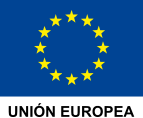SOS-SM: SENSOR OBSERVATION SERVICE SEMANTIC MEDIATION
What is SOS-SM? General background
The large volume of environmental observation data that is currently being produced by public
and private initiatives is highly heterogeneous both in data formats and semantics.
A major challenge is to make all these data accessible in a uniform and integrated manner.
Sensor Web Enablement (SWE) specifications of the Open Geospatial Consortium (OGC) provide standard data
encodings and web service interfaces. However, semantic data mediation is still an issue
to be solved. This framework is a first effort for the semantic mediation between heterogeneous
environmental observation datasets through Open Geospatial Consortium standard Sensor Observation
Services (SOS). The solution enables application domain experts to provide semantic data integration
knowledge within the scope of two well known top-level ontologies, namely W3C Semantic Sensor
Network and NASA Semantic Web for Earth and Environmental Terminology. Such knowledge is
combined with data source knowledge during the evaluation of global Sensor Observation Service
GetObservation requests. Finally, the solution follows a Local As View data integration approach,
thus new data sources may be incorporated without having to change the available data integration knowledge.
SWE initiative
This initiative proposes various standard web service interfaces and data formats that enable interoperable access to sensor data in environmental data infrastructures. These standards are well known means to acquire, catalog and integrate environmental observation data from various sources. Among the proposed standards, and specially relevant in the domain of geospatial observation data, are the Sensor Observation Service (SOS), that is internationally assumed as the interface to access observation data sources and the Observations and Measurements (O&M) that defines both a data model and an XML encoding for environmental observation data.
Observation and Measurements (O&M)
The OGC O&M standard specifies a general data model and XML encoding for the observations.
An Observation provides a Value (such as 15ºC) of an ObservedProperty (such as
air temperature) of a specific entity to which the property applies, called Feature of Interest
(for example a meteorological station), which are generated by some observation Process
(commonly a physical sensor like a temperature sensor), that is, an event with a result which
has a value describing some phenomenon. Beyond the value and the references to Process,
Property and FOI, the observation must register also the time when the value applies to the
FOI PhenomenonTime and the time when the Process was executed ResultTime.
Sensor Observation Service (SOS)
An OGC SOS provides access to a collection of observations modeled with the O&M
OGC specification. Such observations are organized
in possibly overlapping collections called Offerings, which are defined as a logical
grouping of observations offered by a service that are related in some way. The parameters
that constrain the offering should be defined in such as a way that the Offering is “dense”
in the sense that requests for observations that are within the specified parameters should be
unlikely to result in an empty set. For instance, an offering could be “observations of humidity
and temperature in the northern coast of Spain during the last three months”. More
specifically an Offering is constrained by a list of FOIs, a list of process, a list of observed
properties, a spatial extension and a temporal range. The standard has three mandatory operations (detailed below).
Operations:
sh
- GetCapabilities
- DescribeSensor
- GetObservation
Getting started
Contents
/sos-mediator: The source files of the mediator which integrates observations provided by different datasources./sos-meteoroloxicas: The source files which implement the wrapper to access to meteorological obserations (database)/sos-oceanograficas: The source files which implement the wrapper to access to oceanographic observations (database)/sos-radar: The source files which implement the wrapper to access to radar observations (THREDDS Server via NetCDF Subset)/sos-semantic-client: The sources of the web client which uses the semantic enhancementNOTICE: Third Party libraries and their licensesREADME: This fileRELEASE-NOTES: The release notes of the 52°North SOS
Code Compilation
This project is managed with Maven3. Simply run mvn clean install to create a deployable .WAR file.
Deploy .WAR
Some steps:
- Move the .war file to the Tomcat path /webapps.
- Start Tomcat to unzip the .war file.
- Stop Tomcat
- Modify the files of each wrapper implementation to configure the conection to each database or server. Those files "dataSourceName.config" are located in PATHTomcat/webapps/SOS/WEB-INF/conf/configDataSources/dataSourceName, changing the database string connection, the user and password. This step configures the conection between the framework and each datasoruce.
- Start Tomcat again
Adding a new wrapper
The new wrapper must implement the interface (ISOSWrapper) located in /sos-wrappers module.
If NEWDATASOURCE is the name of the new wrapper to be added (choose one for your wrapper),then create the code in /sos-NEWDATASOURCE/src/main/java/org/n52/sos/NEWDATASOURCEWrapper. Inside such path, create the file which implements the interface and name it SOSNEWDATASOURCEImp.java.
The name of the new wrapper implementation has to be added to the file web.xml, as it is shown below:
sh
<init-param>
<param-name>listDataSources</param-name>
<param-value>meteoroloxicas oceanograficas NEWDATASOURCE</param-value>
</init-param>
Compile and deploy as described in previous sections.
NOTE
The current wrapper implementations are specific for databases that can not be accessible. This implies that you need to develop new wrappers for your datasources in order to use SOS-SM.
Citation
Some papers related to this framework are listed below: - Regueiro M.A., Viqueira J.R.R., Stasch C., Taboada J.A., Semantic Mediation of Observation Datasets through Sensor Observation Services, Future Generation Computer Systems 67, Elsevier, , pp. 47-56, 2017. Issn: 0167-739X. doi: http://dx.doi.org/10.1016/j.future.2016.08.013. JCR Q1 - Regueiro M.A., Viqueira J.R.R., Stasch C., Taboada J.A., Sensor Observation Service Semantic Mediation: Generic Wrappers for In-Situ and Remote Devices, 35th International Conference on Conceptual Modeling (ER 2016), Gifu, Japan, 14 - 17 November 2016. CORE A - Regueiro M.A., Viqueira J.R.R., Taboada J.A., Cotos J.M., Virtual integration of sensor observation data, Computers & Geosciences 81, Elsevier, England, pp. 12-19, 2015. Issn: 0098-3004. doi: http://dx.doi.org/10.1016/j.cageo.2015.04.006. JCR Q1
License
This project is licensed under the terms of the GPL v3 license.
Info
-
- Researchers
- José Ramón Ríos Viqueira
- José Ángel Taboada González
- José Manuel Cotos Yáñez
- Manuel Antonio Regueiro Seoane



